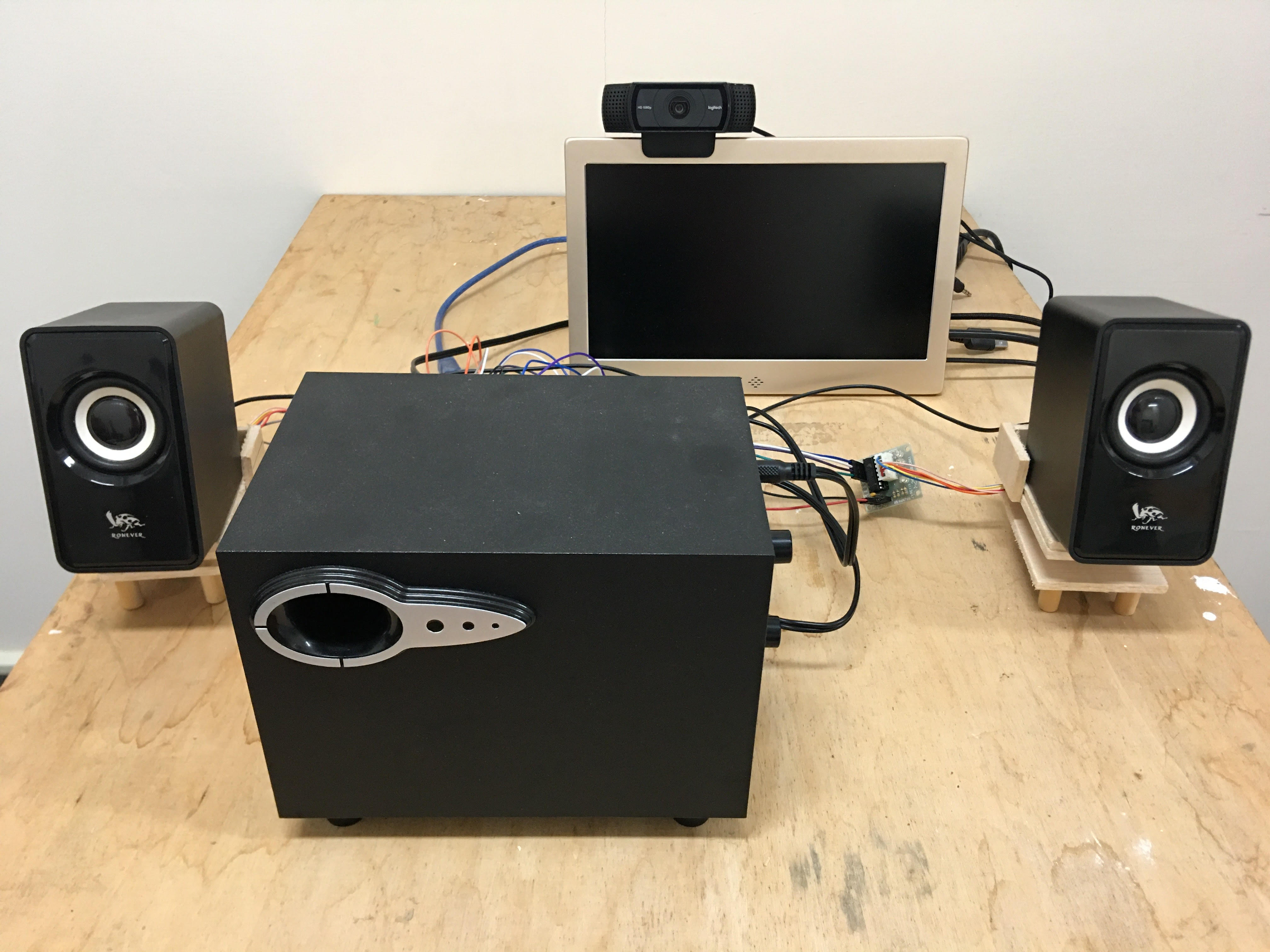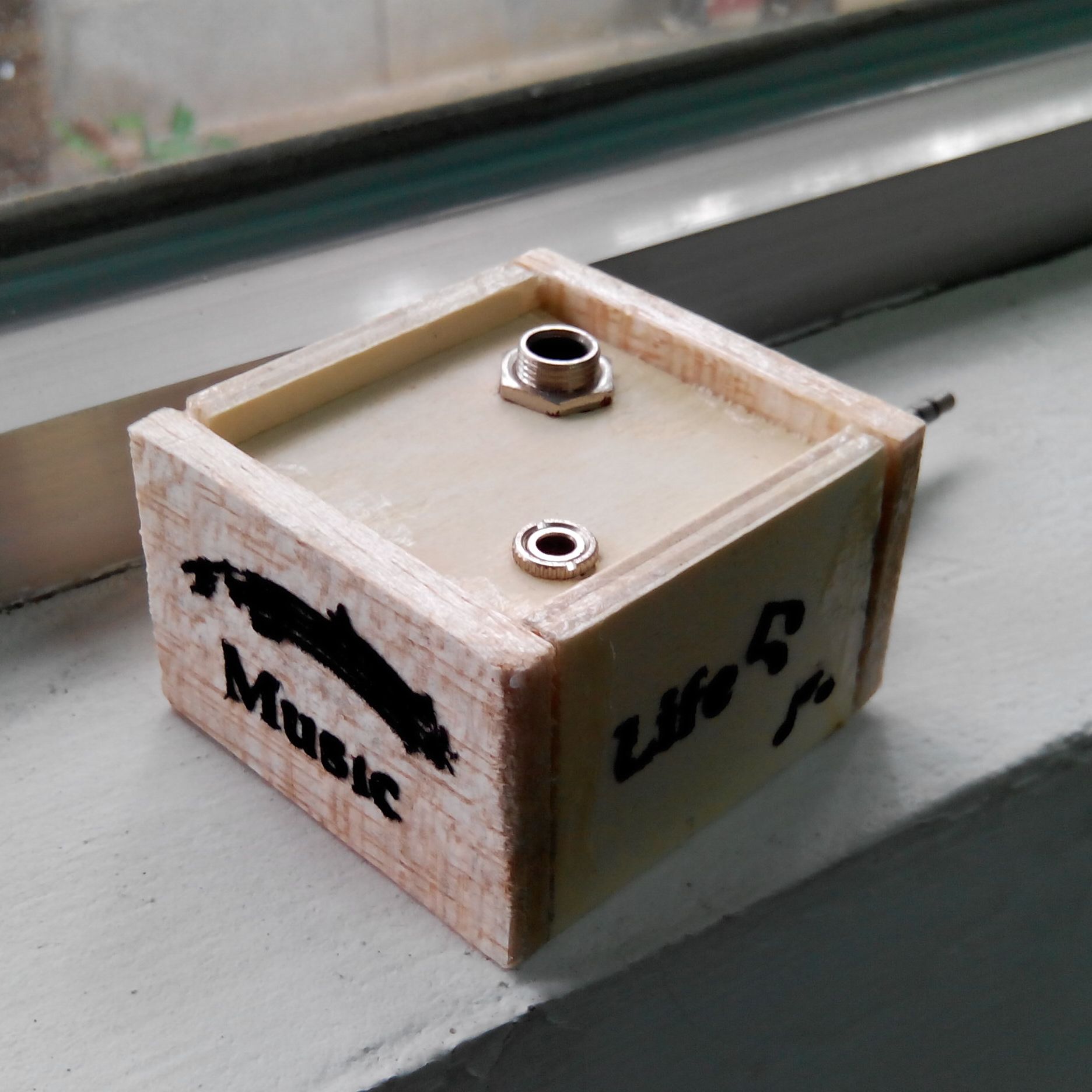|
ELECTRICAL ENGINEERING
Media Lab
|

Autonomous Sound Systems
As artificial intelligence thrives, the designing of autonomous houses is growing rapidly. Initially, the smart home ecosystem focused on security and energy efficiency. However, during the COVID-19 pandemic, the smart home requirements have shifted toward entertainment at home. The purpose of this research project was to develop a robotic audio system for home automation. Although multichannel audio systems enable people to enjoy surround sound as they do at the cinema, stereo audio systems have been popularly used since the 1980s. This is because of their convenience and affordable price. The major shortcoming of a stereo audio system is its narrow listening area. If the listeners are out of the area, the system has difficulty providing a stable sound field. The proposed system, by integrating computer vision and robotics, can track the head movement of a user and generate a personalized listening area. Unlike previous studies, in which only a diminutive scenario was built, in this work, the idea was applied to a commercial 2.1 audio system, and listening tests were conducted. The experimental results are encouraging, especially for high-pitched music.
|

Low Power Audio Amplifier
An audio power amplifier is an electronic amplifier that reproduces low-power electronic audio signals such as the signal from radio receiver or electric guitar pickup at a level that is strong enough for driving (or powering) loudspeakers or headphones. This includes both amplifiers used in home audio systems and musical instrument amplifiers like guitar amplifiers. It is the final electronic stage in a typical audio playback chain before the signal is sent to the loudspeakers and speaker enclosures.
|

Audiobooks for Visually Impaired Children
An audiobook (or talking book) is a recording of a text being read. A reading of the complete text is noted as "unabridged", while readings of a reduced version, or abridgement of the text are labeled as "abridged". Spoken audio has been available in schools and public libraries and to a lesser extent in music shops since the 1930s. Many spoken word albums were made prior to the age of videocassettes, DVDs, compact discs, and downloadable audio, however often of poetry and plays rather than books. It was not until the 1980s that the medium began to attract book retailers, and then book retailers started displaying audiobooks on bookshelves rather than in separate displays.
|

Audio interface for mobile devices
We built an audio interface serving as the connection between a mobile device and an electric instrument, such as an electric guitar, an electric piano, or an electric bass, providing impedance matching and voltage balance. The conventional audio interface was designed for personal computers and only had USB or IEEE 1394 communication protocol. Our proposed interface, on the other hand, transfers the electric instrument signal into a 3.5mm jack in a smartphone or a tablet. The developed interface is light, low-power, and low-noise, thereby suitable for street musicians.
|

3D sound over headphones
In recent years, major advances in gaming technologies, such as cost-effective head-tracking and immersive visual headsets have paved the way for commercially viable virtual reality to be delivered to the individual. There are an increasing number of binaural systems embedded with head-related transfer functions (HRTFs), so consumers can experience virtual environments via conventional stereo loudspeakers or headphones. Now the consumer finally has the opportunity to experience new gaming, cinematic and social media experiences with truly immersive and interactive 3-D audio and video content.
|
|